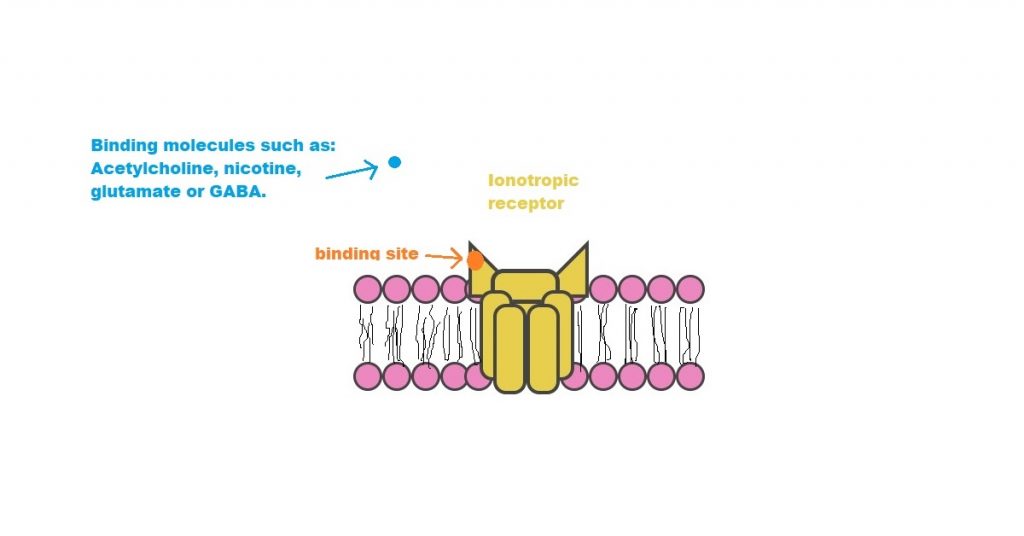Ionotropic receptors (also known as ligand-gated channels) are large proteins thought to be composed of five subunits (other proteins) that assemble in the membrane. As suggested by their name, LGCs contain a neurotransmitter binding site and an intrinsic ion channel that is gated by the transmitter. This type of mechanism is therefore sometimes called ionotropic transmission.
Put plainly ionotropic receptors differ from a voltage-gated channel (i.e a door) because access is controlled by neurotransmitter binding (i.e lock & key) instead of the membrane potential reaching the full threshold (i.e. another lock & key). Whether receptor activation depolarizes or hyperpolarizes the postsynaptic membrane depends on the ionic permeability of the channel.

Location
The majority of ionotropic receptors are located along the dendrites or cell body.
Examples of receptors
Acetylcholine, nicotinic, and glutamate on NMDA or GABA receptors. Furthermore, there are receptor subtypes, the first identified are named AMPA, kainate, and NMDA. The aforementioned receptor subtypes are named after the agonists to which they respond selectively.
Sources
- Feldman, R. S., Meyer, J. S., & Quenzer, L. F. (1997). Principles of neuropsychopharmacology. Sinauer Associates.